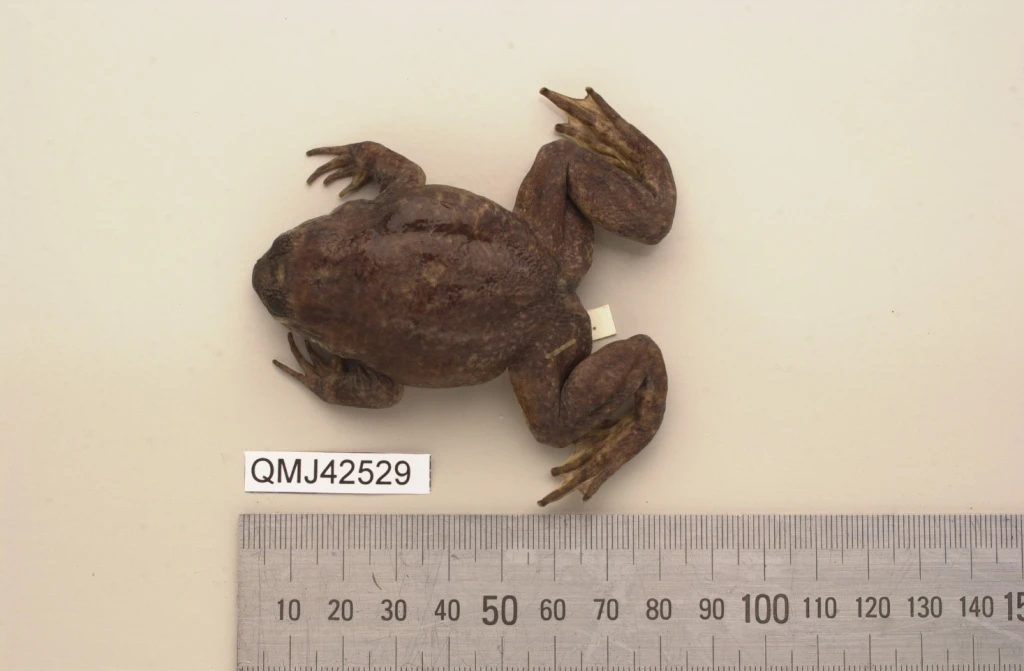By Patrick Couper, Senior Curator of Reptiles and Amphibians, Queensland Museum
There were only two species of gastric brooding frogs and both were narrowly restricted to mountain ranges near the Queensland coast. The Southern Gastric Brooding Frog, Rheobatrachus silus, lived in the Conondale and Blackall Ranges north of Brisbane and its northern counterpart, R. vitellinus (commonly called the Northern Gastric Brooding Frog) was found in fast flowing, rainforest streams in the Clarke Range, west of Mackay.
As the common name suggests, these frogs had an unusual breeding strategy. After laying her eggs, the female frog would then ingest them, using her stomach as a brood pouch.
This behaviour was unique amongst vertebrates and was achieved by the female suppressing the production of her gastric secretions, allowing her tadpoles to develop through to fully formed froglets, which she then regurgitated.
The Southern Gastric Brooding Frog was described in 1973 but by 1981, it had disappeared from the wild and the last individual died in captivity in 1983. The demise of this species was quickly followed by that of its northern cousin, R. vitellinus, a frog that was discovered and described in 1984 and last seen in the wild in 1985. Sadly, both gastric brooding frogs are now extinct.
Initially, the disappearance of these frogs was a mystery but we now know that they were killed by a fungal disease (chytridiomycosis) which damages the surface layers of the skin. One theory suggests that this pathogen was introduced to Australia, arriving with African Clawed Frogs, Xenopus laevis, which were imported for research purposes and once commonly used for pregnancy tests.
These frogs serve as a stark reminder that human disturbance of the natural world, be it habitat loss, climate change, pollution or the introduction of invasive species and novel diseases has dire consequences. The Southern Gastric Brooding Frog, described in the early 1970s, vanished less than a decade later. The Northern Gastric Brooding Frog suffered a quicker demise. All that remains of these frogs are the priceless voucher specimens held in museum collections. These lifeless, frequently consulted relics, contain most of what we know and all we can still learn of these extraordinary frogs.
Holotype of Rheobatrachus vitellinus QMJ42529. Dorsal view, ventral views & lateral views. (© 2004, Queensland Museum, Vince Railton).




You must be logged in to post a comment.